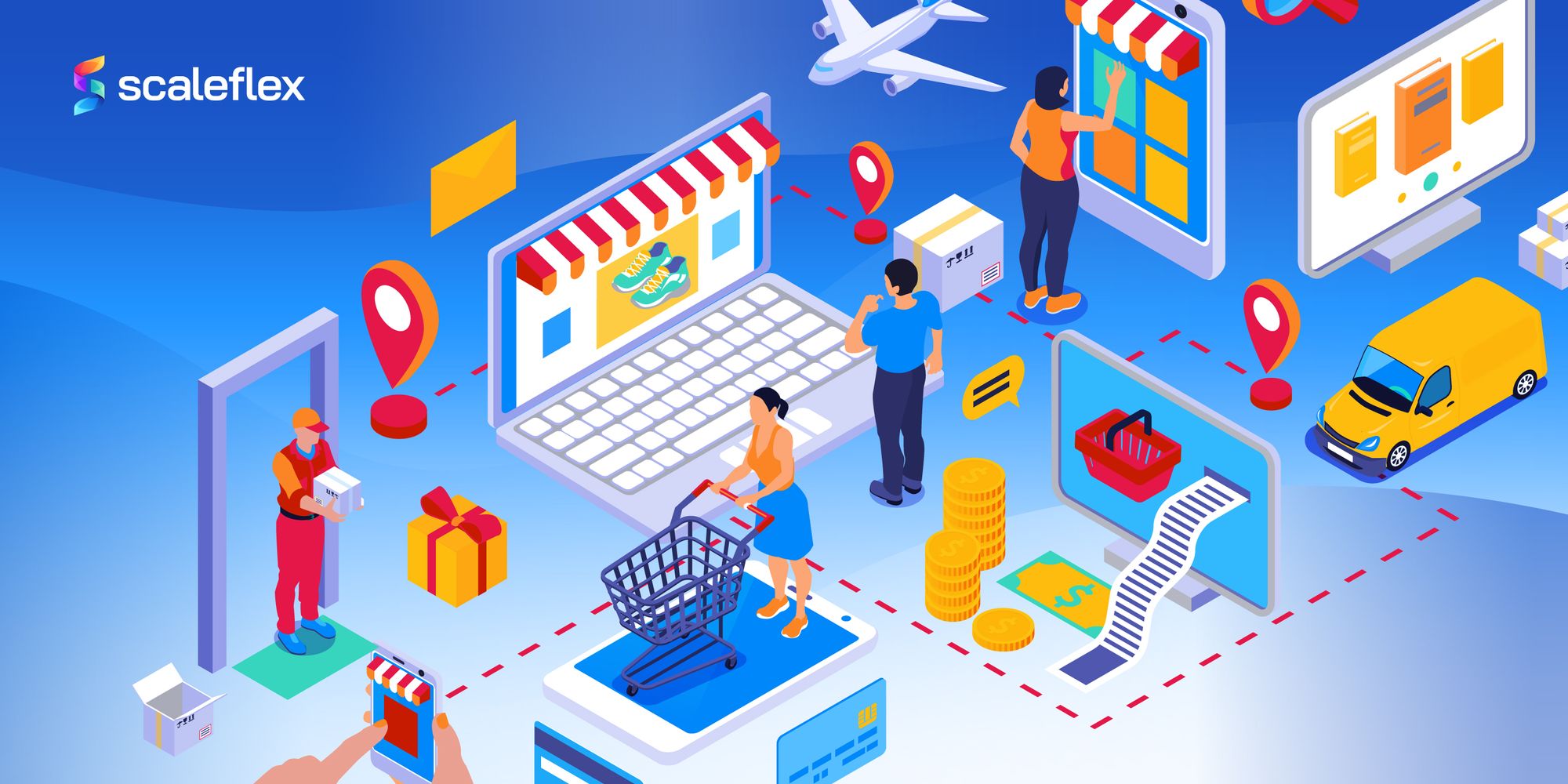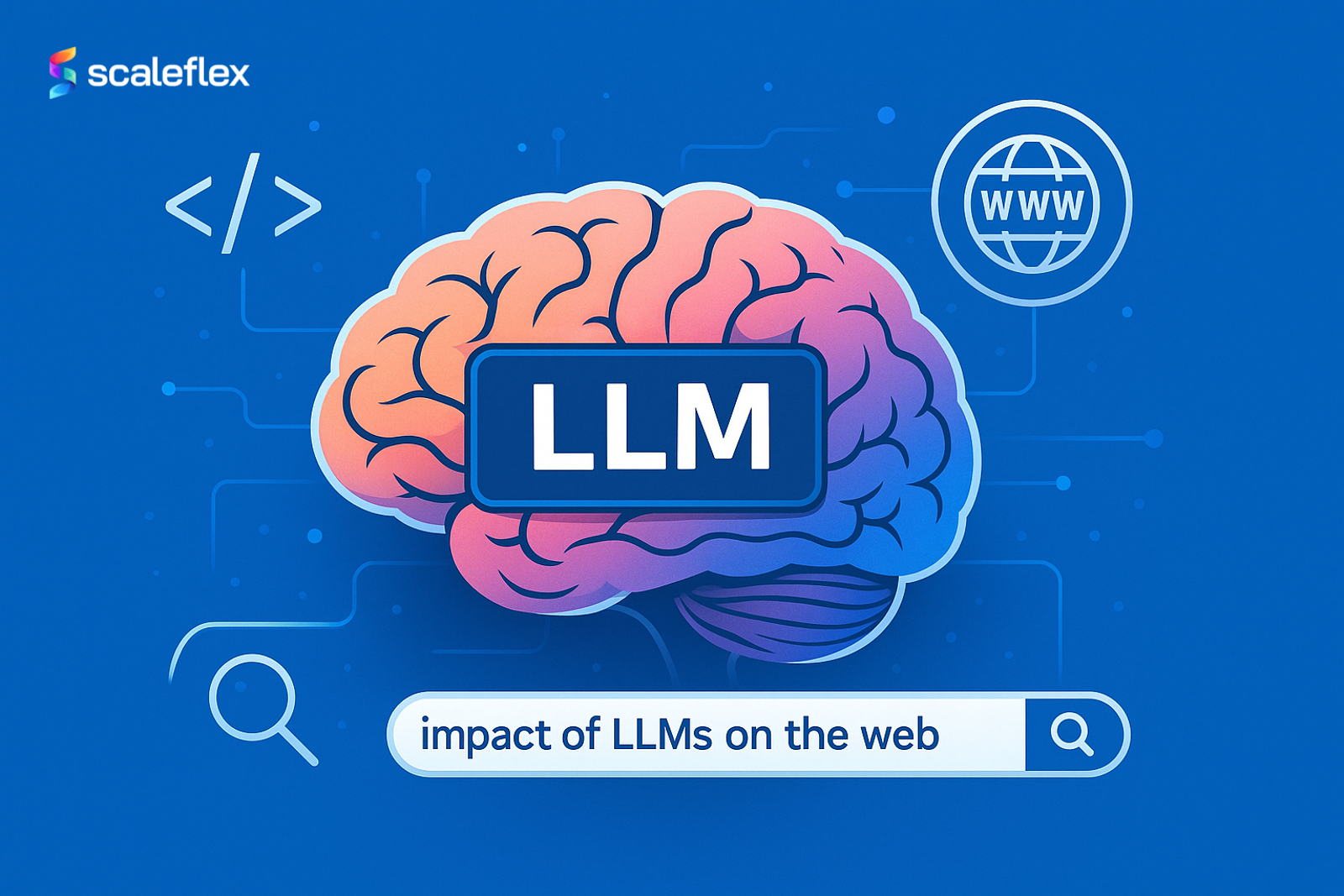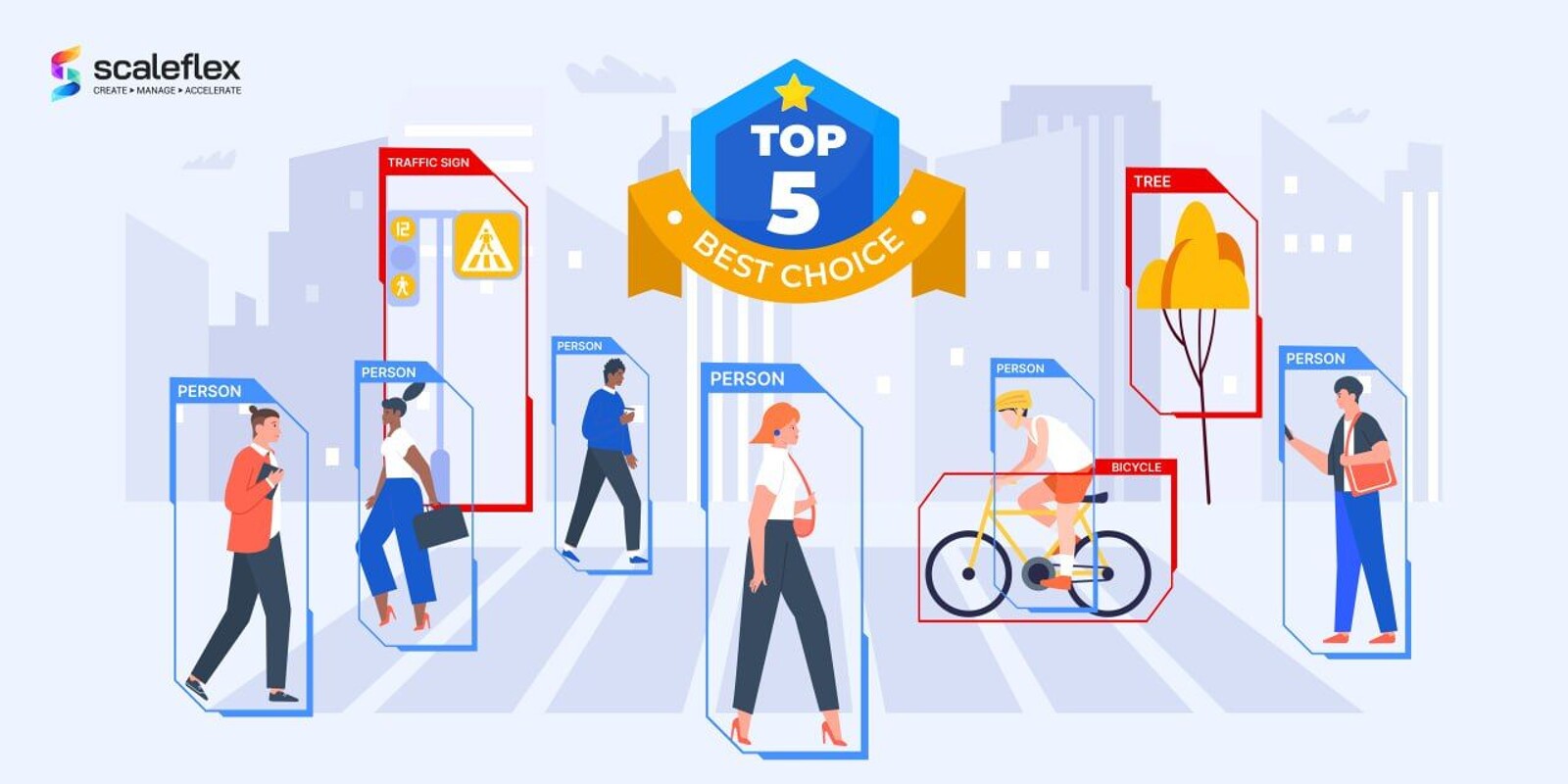Ensure a frictionless buyer journey with AI conversion rate optimization
In our current digital landscape, having a seamless and intuitive buying journey is a critical element to drive conversions. Clients expect effortless interactions, easy access to important information and a painless path from product discovery to purchase. Any obstacle, be it a confusing navigation system, slow-loading visuals, or trouble finding the right product, can lead to irritation and abandoned carts. In order to remain competitive, businesses have to optimize every single touchpoint of their purchase funnel.
For this, Artificial Intelligence (AI) and particularly Visual AI, can be transformative in streamlining the customer journey. Through leveraging AI-powered solutions, any company can eliminate common barriers that are disruptive to the buying process, offer personalized experiences, intelligent search capabilities as well as automated customer support. You can not only improve conversion rate with AI, but also enhance decision making through analyzing consumer behavior in real time, anticipating needs and presenting the most relevant options.
Visual AI can take these functionalities even further by dramatically improving the way customers interact with products online. From AI-driven image recognition that can refine search accuracy, to augmented reality tools that facilitate virtual try-ons, Visual AI can create an immersive, user-friendly shopping experience. Innovations such as these reduce uncertainty from purchasing decisions, increase customer confidence and boost conversion rates.
While businesses are navigating an increasingly competitive digital landscape, integrating AI solutions is essential to avoid excessive cart abandonment. This article will explore how AI-powered conversion rate optimization can minimize friction, optimize engagement, and ultimately lead to higher conversions, helping brands meet the increasingly demanding needs of consumers.
Understanding friction in the buying journey
Providing a smooth and intuitive buying journey is essential to convert potential clients into loyal, recurring buyers. Unfortunately, many businesses can unknowingly introduce friction into the process by creating obstacles that either slow down or discourage purchases. Even very minor inefficiencies, such as confusing product categorization, slow website performance, or difficult checkout process - can lead to frustration and abandonment. Understanding where this friction occurs is essential to getting rid of it.
At the top of the list of most common sources of friction we find poor product discovery. When clients struggle to find what they need because of ineffective search functions, inconsistent tagging or a lack of relevant filters, they are more likely to leave and buy through a more user-friendly alternative. Similarly, low-quality or insufficient visuals can create uncertainty and mistrust. Consumers rely heavily on images to evaluate products online - is the only way they can assess them! If they do not accurately or sufficiently describe the item, lack a variety of angles or fail to include features such as zoom or 360º views, potential buyers may feel hesitant, insufficiently reassured and not complete the purchase.
Another important friction point is a difficult or lengthy checkout process. Customers are expecting a simple transition from selection to payment, and any additional steps (forced account creation, unclear pricing, slow loading) can lead to cart abandonment. On top of that, a lack of real-time support can contribute to these hesitations - unanswered questions concerning sizing, specifications or delivery times can deter buyers from making a confident decision.
As you can gather, friction has a direct impact on conversion rates and customer satisfaction. Businesses that fail to address these pain points are at risk of losing potential revenue and have a diminished trust in their brand. A clear-cut solution? Leveraging AI-driven tools that can automate and optimize every step of the journey. From intelligent product recommendations to AI-powered visual search and virtual assistants, new technology stands to revolutionize how brands reduce friction and enhance customer experience.
How can you improve conversion rates with AI?
Eliminating friction in the buying journey requires a combination of efficiency, personalization, and real-time adaptability. AI conversion rate optimization has emerged as a powerful tool in improving this process, allowing brands to predict customer needs, streamline navigation, and provide instant support. From personalized recommendations to AI-powered search and virtual assistants, these technologies create a seamless, intuitive experience that reduces drop-offs and increases conversions.
Personalization: AI user journey
One of the most impactful advantages of an AI user journey is that it can enhance the shopping experience by proposing personalized product recommendations. Traditionally, e-commerce platforms exclusively relied on static filters and category browsing, but nowadays, AI can analyze consumer behavior in real-time. This factors in their browsing history, purchase patterns and contextual data, to then suggest the most relevant products. This level of hyper-personalization ensures that any customer can quickly find what they need, which reduces frustration and decision fatigue.
Many retail giants, such as Amazon, or fashion brands like Zalando, leverage AI-powered recommendation engines that display curated product selections to increase the likelihood of conversions. These smart suggestions can extend beyond just products as AI can tailor promotions, discounts and content to individual users to create a more engaging and unique shipping experience.
Chatbots and Virtual Assistants: Reducing Drop-Offs
Another guarantee of a frictionless customer experience are AI-powered chatbots and virtual assistants. These are tools that provide instant, 24/7 support and can answer frequently asked questions, offer product guidance, assist with checkout issues and even process returns and exchanges.
Unlike other traditional methods of support, often involving waiting times and human limitations, AI chatbots are capable of handling multiple inquiries simultaneously and are constantly improving their responses through machine learning. Brands such as Sephora have successfully implemented AI-powered chat assistants that are enhancing their customer interactions, thus increasing both the engagement and satisfaction of their clients.
Automated Product Tagging and Smart Search
Yet another point that might pose friction when online shopping are ineffective search functionalities. Plenty of customers abandon their shopping journey simply because they struggle to find the right product due to vaguely assigned keywords or inconsistent tagging. AI can solve this problem by enabling visual and semantic search capabilities that improve product discovery.
For example, Visual AI can help users search for products through images rather than text. Certain platforms such as Pinterest or ASOS currently use AI-driven image recognition in order to help customers find visually similar products by simply uploading a picture. At the same time, natural language processing (NLP) refines search results, as it understands the intent behind queries rather than just matching the exact words.
Through leveraging AI across all these key areas, brands are able to remove obstacles, create better shopping experiences and can ultimately convert more customers easily.

The role of Visual AI in optimizing conversions
Our world is a digital-first world - there’s no way around it. Consumers make purchasing decisions according to what they see, and in this context, conversion rate optimization with AI is a true game changer. Traditional online shopping used to rely on static images and text-based search. Now, Visual AI enhances this process by making product discovery an intuitive, interactive and engaging process. Through AI-powered image recognition, augmented reality and automated content adaptation, e-commerce brands can provide customers with seamless visual experiences that build confidence and boost sales.
AI-Powered Image Recognition for Accurate Product Matching
A great obstacle to conversion is inaccurate or inefficient product search, as we’ve seen. Clients can struggle to find what they need because search engines rely heavily on keyword-based queries that may be misaligned with the way shoppers describe products. Visual AI solves this issue, as it enables image-based search, allowing users to upload pictures in order to find similar or identical items.
Using AI-driven product recognition can help refine search accuracy, ensuring that clients quickly find the most pertinent options. This technological advancement reduces frustration, improves product discovery and reduces the path to purchase, increasing conversion rates.
Virtual Try-Ons and AR-Enhanced Shopping Experiences
One of the main challenges in e-commerce is the impossibility of interacting with the products before buying. Visual AI can bridge this gap through augmented reality or virtual try-ons, which allow customers to see how their products will look on them or in their space.
Many brands are leveraging AI-powered virtual try-ons that let users experiment with the products, as well as Augmented Reality that shows how furniture can fit in a real-world environment. This removes uncertainty, enhances visualization and can boost consumer confidence thus reducing return rates.
Smart Content Adaptation for Different Platforms
It’s important to keep in mind that consumers engage with brands across multiple platforms - social media, websites and mobile apps. Visual AI can ensure that content is automatically optimized for each platform, which helps maintain a cohesive brand image while maximizing engagement. AI-driven tools can help resize, reformat and enhance visuals dynamically, ensuring they are displayed correctly and attractively across all channels.
Through implementing Visual AI solutions, brands can not only create a more engaging customer experience but also streamline the buying journey, leading to higher conversions as well as stronger customer loyalty.
Future trends and considerations
As conversion rate optimization with AI is continually evolving, the impact it has on the buying journey will only grow. Future advancements will probably focus on making shopping experiences even more fluid, personalized and interactive, reducing friction to near non-existent levels. Some currently emerging trends like generative AI, hyper-personalization, and AI driven video content are poised to redefine the way brands engage with customers and drive their conversions.
One of the key trends is the rise of AI-generated product imagery and videos, which means that instead of relying solely on traditional photoshoots, brands can rely on AI to create customized visuals that are tailored to individual shoppers, allowing for dynamic, context-aware product displays that adapt in real-time.
Another significant advancement is emotion-driven AI, in which machine learning models analyze facial expressions, voice tones and user interactions in order to understand customer sentiment. This is something that will, in the future, enable brands to refine their marketing strategies and offer more empathetic, human-like interactions.
However, one mustn’t forget that with great advancements come great challenges. Ethical concerns around data privacy, AI bias and over-automation can’t be forgotten and have to be addressed in order to maintain trust. Finding the right balance between AI-driven efficiency and human touch is essential for brands that are looking to bring closer - and not alienate - their clients.
In staying ahead of these trends and leveraging AI responsibly, businesses are sure to future-proof their buying journey, which ensures long-term success in an increasingly digital world.
Key takeaways
By now it is abundantly clear that AI conversion rate optimization is not a futuristic concept, but rather a critical tool for companies that seek to optimize their buying journey and increase conversions. As it eliminates pain points, AI enhances product discovery, personalizes recommendations, streamlines customer support and ensures visual consistency across all platforms, with Visual AI taking this one step further by enabling intuitive, image-based search, virtual try-ons and automated content adaptation which makes shopping more engaging and efficient. Scaleflex's Visual AI targets industry-specific pain points to help your business go the extra mile.
Consumer expectations continue to rise, and businesses that fail to integrate AI run the risk of falling behind. AI is in no way a replacement for human connection but should be used to enhance customer experiences while it maintains authenticity and trust. The future of commerce lies in a balanced approach.
Through embracing AI today, brands stand to create a seamless, intuitive and high-converting buying journey that can meet the ever-evolving needs of modern consumers.





